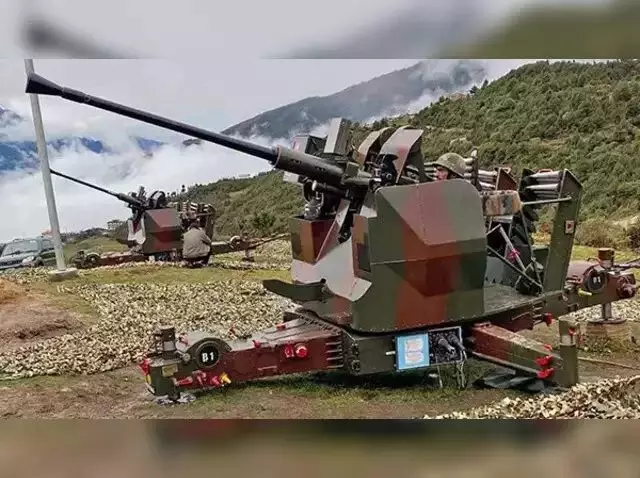Indian Army Deploys Advanced Anti-Drone Defense Systems Along China Border
Along its northern borders with China, the Indian Army has stationed seven brand new indigenous integrated drone detection and interdiction systems (IDD&IS).
image for illustrative purpose

Seven new indigenous integrated drone detection and interdiction systems (IDD&IS) have been inducted by the Indian Army, a strategic move to strengthen its defense capabilities along the northern borders with China. These onboard systems allow for the ‘hard kills’ with lasers and the 'soft kills’ with the jamming of hostile drones. These systems, named Mark-1 variants, are an addition to the current counter-drone systems and were developed by DRDO and Bharat Electronics.
The systems enable the destruction of low radar cross-section drones or unmanned aerial vehicles (UAVs) through the integrated application of soft and hard kills, according to an officer involved in the deployment. Conflicts like the ones between Russia and Ukraine and Armenia and Azerbaijan have highlighted the necessity for strong defense mechanisms due to the growing use of drones and swarm drones. This has led our military to prioritise the acquisition of numerous UAVs from both international and domestic suppliers. Effective counter-drone systems, such as jamming, spoofing, blinding, and laser-based DEWs, are being developed and deployed with great emphasis.
“Produced by DRDO and Bharat Electronics, these IDD&ISs are Mark-1 variants inducted by the Army Air Defense (AAD). They will add to the existing counter-drone systems. There will, of course, be advanced IDD&IS versions with longer interception ranges. The systems provide an integrated capability to detect low radar cross-section drones or unmanned aerial vehicles (UAVs) and enable their destruction through the integrated application of soft and hard kills,’’ explained an Indian Army officer.
Improving its defense capabilities against drones is already a priority for the Indian Air Force (IAF). A number of anti-swarm drone systems, including those based on kamikaze drones and mobile micromunitions, have been put out to initial tender by the organisation. Furthermore, in order to safeguard its assets and air bases from drone attacks, the IAF is in the market for the procurement of 100-200 vehicle-mounted C-UAS systems.
India is still behind other nations when it comes to developing drones and systems to counter drones, even though they have made some progress recently. Nevertheless, a determined endeavour is underway to close this gap with the creation of anti-drone systems by DRDO and the implementation of more robust DEW systems. In the next three to five years, DRDO plans to develop systems with higher power levels; presently, they are working on DEWs with power levels of nearly 30-50 kilowatts.
According to a trusted source,
‘’The aim is to develop DEWs with higher power levels in the next three to five years with envisaged operational ranges of tens of kms. The development of more powerful and efficient lasers will allow for greater range and precision. Moreover, advancements in beam-steering technology and adaptive optics may enhance the weapon’s ability to maintain focus and accuracy at longer ranges.’’
Longer range and more accurate targeting will be possible with the improvement of DEWs. The weapon's focus and accuracy should be improved at longer ranges thanks to developments in adaptive optics and beam-steering technology. The necessity for a mission-mode national programme on DEWs to strengthen India's defense capabilities is being acknowledged in light of the continuing military confrontation with China in eastern Ladakh.

